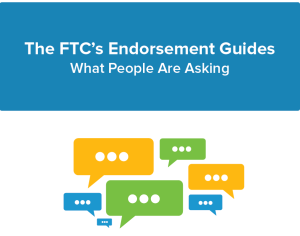What are the FTC disclosure guidelines?
FTC disclosure guidelines, what are they and why should you know them.
Up until a couple of years ago the use of endorsements, sponsorship and influencers in social media was the wild west.
 As a result the FTC stepped in and issued extensive guidelines late last year and you should know them.
As a result the FTC stepped in and issued extensive guidelines late last year and you should know them.
Why should you k The FTC has stepped up its enforcement in the form of warnings and fines
As a business, you are require to educate your influencers, ambassadors… on what should be disclosed and how and the FTC is quite specific about it
As an influencer, sponsored or ambassador if you receive anything of value you have to clearly disclose that you do and the notion of value is pretty extensive
As an employee of the company you have to clearly disclose it
Disclosures have to be clear and conspicuous. What does that mean?
To make a disclosure “clear and conspicuous,” advertisers should use plain and unambiguous language and make the disclosure stand out. Consumers should be able to notice the disclosure easily. They should not have to look for it. In general, disclosures should be:
- close to the claims to which they relate;
- in a font that is easy to read;
- in a shade that stands out against the background;
- for video ads, on the screen long enough to be noticed, read, and understood;
- for audio disclosures, read at a cadence that is easy for consumers to follow and in words consumers will understand.
A disclosure that is made in both audio and video is more likely to be noticed by consumers. Disclosures should not be hidden or buried in footnotes, in blocks of text people are not likely to read, or in hyperlinks. If disclosures are hard to find, tough to understand, fleeting, or buried in unrelated details, or if other elements in the ad or message obscure or distract from the disclosures, they don’t meet the “clear and conspicuous” standard. With respect to online disclosures, FTC staff has issued a guidance document, “ How to Make Effective Disclosures in Digital Advertising,” which is available on ftc.gov.
By the way, if you are in healthcare, so did the FDA and in financial services so did the SEC and FINRA.









